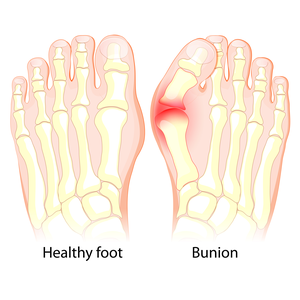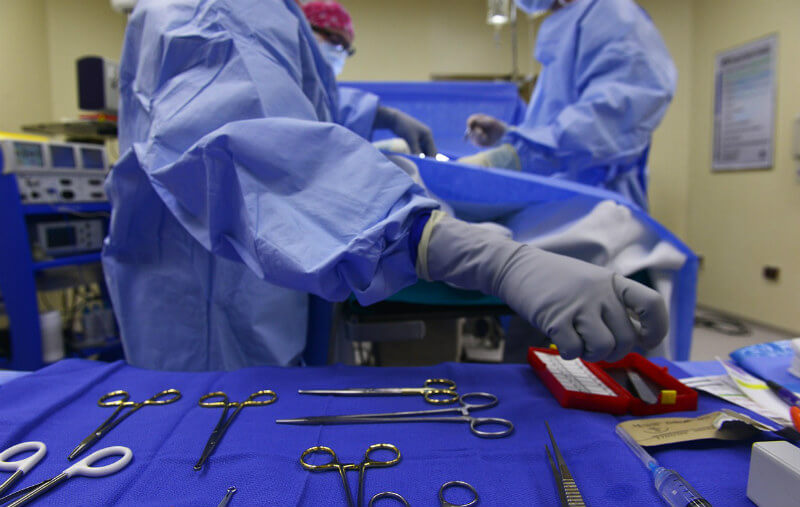
Ever noticed a bump that sticks out of the base of your big toe? Chances are that you have a bunion.
A bunion is caused by the misalignment of the big toe that results in a deformity of its joint. This condition forms a lump of tissue that is manifested as a bump at the toe’s base.
Initially, you may treat a bunion with non-surgical methods. However, a surgery is advisable if the bump becomes painful and interferes with daily life.
That said, how much does bunion surgery cost?
Average Cost Of Bunion Surgery
The average cost of bunion surgery in the US, according to Medigo.com, is $7,000 per foot. The exact price may go as high as $25,000. Note that these figures represent the expenses from the procedure if you’re paying without insurance.
The expenses for a bunion surgery include:
- The orthopedic consultation
- An x-ray
- The surgery
That said, here is a breakdown without insurance:
- Facility charges: $3,500
- Procedure: $1,600
- Anesthesia: $450
Note that there are other expenses aside from the ones included in the above list. For instance, you might pay a consultation fee.

Factors Affecting The Bunion Removal Quotes
- Location
The number one cost determiner for a bunion surgery is the place you’re in. After all, you’ll normally look for a hospital nearby. This list from Amino will give you a perspective on the cost differences. For a quick look at the varying prices, here are samples by state (as listed on the said website):
- Oklahoma, OK: $4,110
- Jacksonville, FL: $4.365
- Rochester, NY: $4,543
- Birmingham-Hoover, AL: $4,653
- New Orleans-Metairie, LA: $4,746
- Richmond, VA: $7,136
- Grand Rapids-Wyoming, MI: $7,027
- Seattle-Tacoma-Bellevue, WA: $6,588
- Los Angeles-Long Beach-Anaheim, CA: $6,326
- Portland-Vancouver-Hillsboro, OR-WA: $6,277
The above list, according to the website, shows the prices you’d probably pay if you’re covered by insurance.
- Your Health Insurance Plan
Most companies cover the said procedure as long as it’s “medically necessary”.
The out-of-pocket cost (the remaining amount you’ll need to pay if you’re covered by insurance) will also depend on the current status of your plan. Your co-insurance, co-pay, and how much deductible you have left can all affect the price.
Note that the network rate is also a cost determiner. The said rate is the price negotiated between your insurance company and your doctor or hospital. That is, given that the health service provider in question is not out-of-network.
- Additional Expenses
The cost may go higher if you have other health problems aside from your bunion.
An emergency during the surgery will also likely add up to the cost.
Saving On Costs
Your health insurance plan has a major role in helping you save on costs. That said, make sure that the company will cover the procedure. To prove that the bunion surgery is necessary, you should provide them a proof of pain or discomfort.
You should also consider the requirements of your insurance company. Related to your condition, these may include:
- A bony protrusion (wherein the hallux valgus angle is 30 degrees or more while the inter-metatarsal angle is 12 degrees or more)
- A soft tissue (wherein the hallux valgus angle is 15 degrees+ with no degenerative changes at the joint)
- Pain that makes walking difficult (despite at least 6 months of protective pads, shoe inserts or alternative footwear)
- Neuroma caused by the bunion
- A crossover toe deformity
- Recurrent bursitis
- An x-ray evidence of osteoarthritis
Of course, you should call your insurance company for their requirements. You’d most likely acquire that coverage if your bunion is really painful and you have proof.
What To Expect?
Your doctor will have to check the bunion first to determine what type of surgery is applicable. Doing so is important as the procedure will only have the best results if the method is tailored to your specific condition.
That said, the types of bunion surgery your doctor may choose from include:
- Bunionectomy or the removal of part of the metatarsal head or the bump
- Realignment of soft tissues around the joint of the big toe
- Osteotomy or the moving of the bones to a normal position
- Removal of the bone from the end of the first metatarsal bone
- Arthrodesis or the fusion of the big toe joint
- Lapidus procedure of the fusing of the joint where the metatarsal bone joins the mid-foot
- Implant insertion
What will you go through during the bunion surgery? Well, after the initial preparations, your anesthesiologist will administer a local anesthetic. You may also request a general anesthetic if that’s what you prefer.
After the anesthetic takes effect, the procedure itself will take about an hour. Since the surgery is performed by your doctor on an outpatient basis, you can go home the same day after the operation.
After The Surgery
There will be a bit of pain and swelling after your bunion surgery. That said, your doctor will prescribe medication for relief. As for your swollen foot, you will have to apply specialist ice packs on it. Note that the swell may be visible for up to six months after the procedure.
Your doctor may also give you instructions for doing physical therapy exercises at home. Additionally, you might receive a range of braces, casts, supportive shoes, or walking aids to aid your movement after the surgery.
Alternatives
Another way to save on the bunion surgery is to not go through the procedure at all. Of course, that option will depend on your doctor.
The alternatives in mending a bunion include:
- Use of painkillers and anti-inflammatories
- Application of ice packs or heat presses
- Use of orthopedic shoes, inserts, and pads
Remember that the above options only aim to temporarily relieve you. Non-surgical treatments do not necessarily remove your bunion.